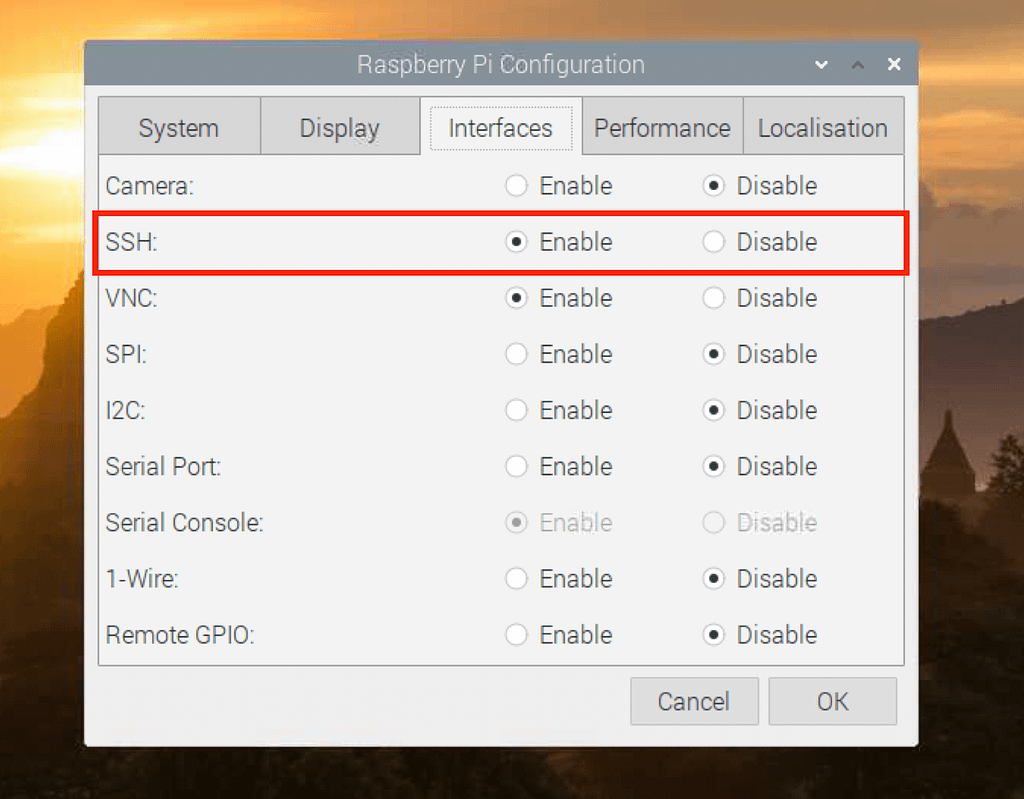RemoteIoT & Raspberry Pi: Secure Remote Access Guide
In an increasingly interconnected world, can you truly afford to not manage your devices remotely and securely? Setting up a secure remote access system using technologies like RemoteIoT, VPC SSH, and a Raspberry Pi is not just a technological advantage; it's a necessity for anyone serious about IoT and data security.
The ability to connect to your devices from anywhere in the world is no longer a futuristic concept; it's a present-day requirement for many individuals and businesses. This article provides a comprehensive guide to establishing a robust remote access system, covering everything from Virtual Private Cloud (VPC) setup to configuring Secure Shell (SSH) on a Raspberry Pi, and utilizing free Windows utilities. By mastering these techniques, you will gain the ability to configure RemoteIoT, establish a secure VPC SSH connection, and optimize your Raspberry Pi for seamless remote access.
| Aspect | Details |
|---|---|
| Core Technologies | RemoteIoT, VPC SSH, Raspberry Pi, Windows |
| Primary Goal | Establish secure remote access and management of IoT devices. |
| Key Benefits | Enhanced Security, Scalability, Cost-Effectiveness, and Flexibility. |
| Target Audience | Hobbyists, professionals, and anyone needing secure remote access to IoT devices. |
| Relevant Skills | Networking, Operating Systems, Security Protocols, Cloud Computing. |
| Authentic Reference | Example Guide |
The synergy between RemoteIoT and VPC SSH creates a powerful foundation for secure remote device management. By employing a Raspberry Pi, the cost-effectiveness and flexibility are significantly enhanced, allowing users to build a comprehensive IoT system without massive investment.
Virtual Private Cloud (VPC) SSH offers numerous advantages, all of which are vital to ensure a secure and reliable remote access infrastructure. Security is paramount, and VPC SSH provides encrypted connections that protect data from potential threats. Scalability is another significant benefit; as your network grows, VPCs can easily be expanded to accommodate more devices and users. Furthermore, VPC SSH utilizes cloud services, and is often a cost-effective approach compared to other methods of achieving remote access.
The Raspberry Pi has become a favorite among hobbyists and professionals alike. Its small size, affordability, and adaptability make it ideal for IoT projects. This single-board computer offers many advantages.
One of the key features of the Raspberry Pi is its low power consumption. This is especially important for IoT projects where devices often need to operate continuously. It also allows the Raspberry Pi to be run on battery or solar power in situations where traditional power sources are not available. The Raspberry Pi supports multiple operating systems, including Debian-based Linux distributions like Raspberry Pi OS (formerly Raspbian), as well as Windows 10 IoT Core. This flexibility allows users to choose the OS that best fits their needs and the demands of their project.
The Raspberry Pis compatibility with a wide range of peripherals further enhances its utility. From sensors and actuators to cameras and displays, a variety of devices can be connected to expand the functionality of your IoT projects. When RemoteIoT and VPC SSH are combined, the Raspberry Pi truly becomes a powerhouse for remote device management, unlocking a new level of control and convenience.
Setting up a Virtual Private Cloud (VPC) is the essential first step in establishing a secure remote network. The following steps outline the process of setting up your VPC:
When creating a VPC, the first step is to choose a cloud provider, such as Amazon Web Services (AWS) or Google Cloud, that supports VPC functionality. Following the selection of a provider, the next step involves creating a new VPC, and defining its IP address range. This range determines the private network that your devices will operate within.
Following the creation of the VPC and the IP address range, you'll need to set up subnets and configure routing tables. Subnets divide the VPC's IP address range into smaller, manageable segments, and routing tables determine how network traffic is directed within the VPC. Subsequently, you must enable SSH access by configuring security groups. Security groups act as virtual firewalls, controlling the inbound and outbound traffic allowed to and from your instances within the VPC. By following these steps, you can create a secure and functional VPC that provides the backbone for your IoT devices.
SSH (Secure Shell) is a fundamental protocol for secure remote access to your Raspberry Pi. Enabling SSH allows for secure connections from any device, enhancing your ability to manage your Raspberry Pi remotely. The process is straightforward.
Begin by connecting your Raspberry Pi to a monitor and keyboard. Then, open the terminal and enter the command: `sudo raspi-config`. Navigate to "Interfacing Options" and select "SSH" to enable it. Finally, reboot your Raspberry Pi for the changes to take effect. Once SSH is enabled, you can access your Raspberry Pi remotely from any device on the same network. This access is encrypted, providing a secure way to administer your device from anywhere.
RemoteIoT provides a suite of tools designed to streamline the management of IoT devices. These tools are designed to allow users to monitor, configure, and visualize data from their devices easily. Such tools will improve the efficiency of the overall network.
Some popular RemoteIoT tools include device monitoring software, which allows you to track the status and performance of your connected devices in real time. Configuration management tools enable you to deploy updates, change settings, and manage configurations remotely. Data visualization platforms provide insights into the data collected by your IoT devices, allowing you to analyze trends and patterns. By leveraging these tools, you can gain better control over your IoT ecosystem, improve overall performance, and make more informed decisions based on the data your devices generate.
Fortunately, there are several free Windows tools that can greatly enhance your RemoteIoT experience. These applications make it easier to connect to and manage your devices.
Some recommended tools include PuTTY, a free SSH client for Windows, which provides a secure and straightforward way to connect to your Raspberry Pi via SSH. WinSCP is a secure file transfer program, allowing you to transfer files between your Windows computer and your Raspberry Pi. Visual Studio Code, a versatile code editor with extensive support for various programming languages, including support for IoT development, simplifies the process of writing and debugging code for your IoT projects. These tools are available from their official websites. Make sure you are downloading the latest version to maintain safety.
Even with the most carefully planned setup, issues can arise. Being able to troubleshoot and resolve common problems is essential to maintain connectivity and ensure your remote access system is stable.
One common issue is the inability to connect via SSH. First, verify that SSH is enabled on your Raspberry Pi. Then, check your network settings and firewall rules to ensure that SSH traffic is allowed. Also, carefully check the IP address and port number to ensure you're connecting to the right location. By addressing these issues, you can restore connectivity and maintain a stable remote connection.
Security should be your primary concern when setting up a remote IoT network. Implementing best practices is vital to protect your network from unauthorized access and potential threats.
One of the key security measures is to use strong, unique passwords for all devices. Two-factor authentication (2FA) adds an extra layer of security, and should be enabled whenever possible. Regularly update your software and firmware to patch any security vulnerabilities. Implement these measures to protect your network.
To ensure that your RemoteIoT setup performs optimally, consider the following performance optimization tips:
One of the first steps in optimization is to minimize unnecessary services running on your Raspberry Pi. Next, consider using compression techniques to reduce the overhead associated with data transfer. Lastly, regularly monitor network traffic and adjust the settings as needed to fine-tune the performance. By optimizing your setup, you can achieve faster response times and improve reliability.


Detail Author:
- Name : Prof. Rosa Greenfelder Jr.
- Username : kolby.abshire
- Email : joan.grant@boehm.com
- Birthdate : 1997-04-30
- Address : 15139 Marie Trace Apt. 688 New Chaimton, WY 65737
- Phone : +1-763-917-9698
- Company : Beahan, Kirlin and Kulas
- Job : Pantograph Engraver
- Bio : Temporibus veniam et nihil sunt molestiae odit non. Ut a nam et itaque earum dolorem. Sit consequatur dolor tempore sapiente sed atque neque. Repellendus dolorem consequuntur quo.
Socials
linkedin:
- url : https://linkedin.com/in/spencer1983
- username : spencer1983
- bio : Nihil assumenda nihil sint neque sed mollitia.
- followers : 6773
- following : 1627
facebook:
- url : https://facebook.com/malcolm3530
- username : malcolm3530
- bio : Quaerat nisi necessitatibus qui in natus occaecati sed.
- followers : 5809
- following : 132